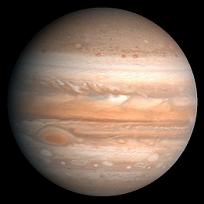How many moons does Jupiter have?

Jupiter’s or Jovian moons are as interesting as the planet they orbit on. Officially, 49 moons have been named. Other anonymous asteroid-like satellites have been discovered alongside giving it a total of 63. It is not surprising for Jupiter to have this number of satellites since it is just natural for an extremely massive planet to have such a strong magnetic field that may capture any small body that gets close enough to it. All of the Jovian moons were named after mythical characters who according to Greek stories were Zeus’ mistresses. Zeus is the Greek god version of Jupiter, the Roman god after whom the planet Jupiter got its name.
The four largest moons are called Galilean satellites. Galileo Galilei discovered them in 1610 using the primitive telescope. Simon Marius disputed this and claimed that he saw the satellites at the same time Galileo did but was not just able to officially publish his discovery. The credit went to Galileo.
These moons were named Io, Europa, Ganymede and Callisto. They are all different from each other, each with astonishing characteristics of their own.
Io, the fourth largest moon in the solar system, is a geologically dynamic satellite. It is globally covered with sulfur. It is the most geologically active object that has been discovered in the solar system. Jupiter’s gravitational pull causes Io’s internal burning core to produce intense volcanic activities all over the satellite’s surface and dry up any quantity of water present in the moon. A geyser-like eruption was photographed by NASA’s Galileo spacecraft in June 28,1996 when it made its flyby to Io. One volcano erupted and shot blue, glow-in-the-dark plume 100 kilometers into space and the color was due to the mixture of sulfur dioxide gas and snow that condensed from the gas as the plume spreads out and cools. Even the most active volcano on Earth cannot compete with that. Io has all of its areas filled with thermal activities, shooting out different colors and forms every hour.
Europa is a completely different world. The whole satellite is covered with ice and it is thought that there may be a deep sea of water and slushy ice underneath. This then leads to the controversy among astrobiologists about the possibility of life thriving in it.
Ganymede is the largest moon in the solar system. It is even larger than Mercury. Unlike other moons, it is able to internally generate its own magnetic field. Callisto is the oldest among the Galilean moons. It is significantly cratered and ancient.
The structures of Io, Europa and Ganymede are almost just like that of the Earth. Io has a scorching core, a mantle of molten rock, and a crust of solid rock mixed with sulfur. Europa and Ganymede also have cores, a rocky mantle around the core, another deep layer of soft ice and a narrow crust of ice. Callisto’s layers are not distinct but its composition seems to be mostly a combination of rock and ice.
The rest of the moons include regular and irregular types. Future explorations to Jupiter may even lead to the discovery of more moons.